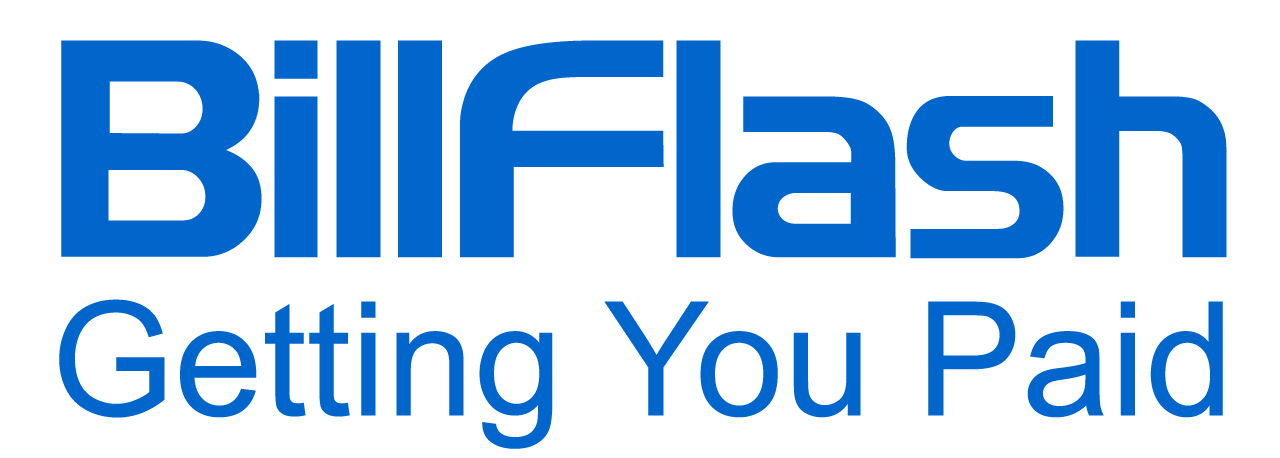Chasing payments manually is costly in ways you may not have realized. Discover tips on how your practice can settle balances more quickly.
Chasing payments isn't a growth strategy for your medical practice. It's a sign that your current revenue experience is working against your staff and your patients. Benchmarks show true A/R days increased from 2023 to 2024, while point-of-service collections improved when providers engaged earlier and made payments easier. However, in many practices today, staff still spend hours printing and mailing statements, making payment reminder calls to patients, setting up payment plans, and reconciling partial payments.
The result is often staff burnout, front office inefficiency, delayed payments, and billing experiences that patients find confusing or inconvenient. Fortunately, there is a better operating model. The practices that outperform in 2025 and beyond will be the practices that reframe the revenue experience around clarity and automation. These practices will prioritize communication during the visit, simplify the patient experience, and automate follow-ups to ensure payments are made without requiring repeated calls.
The Hidden Cost of Chasing Payments Manually
When patient collections rely solely on manual steps, the cost quickly becomes apparent in staff time. Routine follow-ups pull attention away from patient access, scheduling, and patient service. They also turn tasks that should be straightforward into ones that take days instead of hours to complete. Chasing payments manually also increases the risk of errors and frustration. This makes it harder for practice leaders to evaluate what works and what requires adjustment.
Patients also feel the effects. If patient statements are difficult to understand or paying a bill requires several steps, confidence drops, while billing balances remain. But clear statement summaries and digital options align with how consumers prefer to complete their healthcare payments. Aligning to those preferences shortens the payment path from “I owe” to “I paid.”
The CAQH Index even estimates that large, systemwide savings are still available by shifting from manual to automated transactions across the revenue cycle, providing evidence that manual work is costly at scale and a major driver of avoidable staff workload. So, if your staff is still chasing payments, the fix isn't more calls; it's a better process. Ensure key patient communication occurs earlier in the process, and have the patient statements handle the work while the software manages complex tasks.

Why Smart Medical Practices Stop Chasing Payments
Smart practices don't win by making more calls to patients about their bills. They make the necessary adjustments so payment happens with as little friction as possible. These adjustments reduce administrative work, minimize errors, accelerate payments, and enhance the experience for all parties. This is especially important since consumer payment behavior continues to shift to digital.
Patients want clear, electronic ways to receive and resolve healthcare bills, such as secure payment links and provider websites. When practices stop chasing payments, they reinvest the hours they previously spent on manual administrative work into access, scheduling, pre-visit assistance, and resolving true irregularities. That change results in smoother patient registration and less billing back-and-forth after each visit.
The Role of Automation
Automation tools prevent practices from chasing payments without adding confusion. With an automated billing system, staff can send patient statements with just a few clicks. Text and email reminders are sent automatically and stop once a payment is made. Pre‑visit billing messages can also set payment expectations for scheduled services. For patients who prefer paper, practices may automate mailed bills and include a QR code that directs patients to a secure payment portal, ensuring every channel directs to online payment.
With automation, payments arrive faster because patients have a clear path and convenient options. Mistakes also decline since automation reduces duplicate outreach, re‑keying, and misapplied payments. Cash flow becomes more predictable because practices resolve balances earlier and with fewer handoffs. Practices also experience lower collection costs when they replace manual effort with better-managed workflows.
Plain‑language patient statements that show what was done, what insurance paid, and what's left replace confusion with confidence and control. Flexible options such as payment plans and automatic payments help patients stay current without added stress. Smart medical practices choose to outsource labor‑intensive steps so their staff doesn't have to. Print and mail fulfillment, digital patient statement delivery, and integrated payment processing can be managed by a partner that mirrors your practice's brand and integrates with your existing practice management systems.
The result is a lighter administrative load and a more consistent experience across every channel.
Top Tips to Stop Chasing Payments in Your Practice
Practices that engage earlier and simplify the payment process achieve better results. Industry reviews highlight stronger point‑of‑service performance when providers communicate upfront and make paying simple. In October 2023, U.S. consumers reported an average of 45.6 transactions per month; 32% used credit cards, while 30% used debit cards. In addition, most U.S. adults already own a smartphone (nine‑in‑ten (91%), which makes mobile‑ready links and QR codes practical for almost everyone.
Specifically in healthcare, 85% of consumers prefer electronic payment methods for medical bills. This highlights the value of email/text delivery as well as online payment. Together, these numbers explain why simple options that support cards and mobile access reduce friction and accelerate payments without eliminating paper for patients who prefer it. With that in mind, here are tips on how your practice can stop chasing payments and start resolving balances faster:
Tip 1: Use Upfront Payment Requests Before Appointments (Pre‑Visit Billing)
For scheduled appointments, send patients a text or email with a secure link to a payment portal that displays the amount owed in advance of the appointment. Setting expectations early reduces post‑visit surprises and shortens the collection cycle, while supporting transparency requirements.
Tip 2: Simplify Statements to Reduce Confusion
To stop chasing payments, aim for statements that use clear language so patients can understand them at a glance. Keep the amount due and the next step visible, and use the same terms in print, email, text, and your payment portal. Clarity helps reduce patient call volume and accelerates resolution across all channels, while automation minimizes the need for manual statement processing.
Integrate with medical billing software and outsource mailed statements to have them sent with just a few clicks, eliminating the need for printing, stuffing envelopes, stamping, and mailing. Practices can mail bills the next business day, and with QR codes included, patients can scan and pay instantly through the online payment portal. This minimizes the time spent chasing payments and accelerates payment processing.
Tip 3: Start With Automated Payment Reminders and Follow‑Ups
Replace weekly manual payment reminders with an automated system. This system can send scheduled reminders by text and email that end once the patient has successfully made a payment. This keeps patients informed without overwhelming them and frees your staff from spending too much time on repetitive outreach.

Tip 4: Offer Multiple, Patient‑Friendly Payment Channels
To stop chasing payments, your practice must meet patients where they already are—by mail, online, or on their phones. Provide a mobile‑friendly payment page, secure links in email and text messages, and in‑office payment options like Tap to Pay, card, check, and mobile wallets, while keeping mailed statements as a first‑class option. Bridge paper to digital with a QR code so every path leads to a payment.
Tip 5: Implement Flexible Payment Plans, Automated Plans, and Financing Options
Larger balances are easier to manage when patients can choose a structured payment plan or authorize automated payments with clear consent. Flexibility keeps more accounts current without manual tracking, reduces write‑offs, and improves cash flow while maintaining a patient‑friendly experience.
How Technology and Services Like BillFlash Help
Great billing systems remove friction without removing choice. BillFlash connects each step, including patient statements, payment reminders, pre-visit payments, and payment options. This way, patients always know what to do next, and staff spend less time chasing payments.
BillFlash Solutions for Medical Practices
For example, when patients schedule a visit, BillFlash PreBill invites them to pay in advance, reducing paperwork. Practices send a HIPAA-compliant text or email message with a link to PayWoot.com, where patients can view the charges and pay in advance of their visit. It works for office and telehealth appointments, and practices can use it even before a bill is created. This means you can collect the patient portion upfront without producing a statement.
If a balance remains after the visit, eBills convert the patient statement to immediate action. Every paid eBill Notice or Mailed Bill includes a free online eBill, giving patients quick and convenient access. Mailed Bills can also feature a QR code that takes patients directly to PayWoot.com for quick online payment. These solutions both direct patients to the same straightforward online experience, so the next step is always clear. Since many patients prefer this channel and pay faster, it accelerates collections and reduces support calls by providing easy access to both current and past bills.
For patients who have not completed payment, PayReminders maintains momentum without manual calls. These reminders are sent automatically by text and email to encourage faster payment. By default, up to three emails and three texts are sent per month on days 7, 14, and 21 after the first statement is mailed or electronically delivered. Reminders begin immediately upon approval, and you pay only for the reminders sent.
When affordability is what's stopping patients from paying, offer options that fit real budgets. You can start with FlexPay. This allows patients to pay in monthly installments while your practice receives payment in full immediately.
Provider Benefits
With FlexPay, providers receive full payment immediately, with no recourse back to them if a patient fails to make payments. Since patients can choose to pay in monthly installments, this type of flexibility attracts new patients, retains existing ones, and reduces uncomfortable payment conversations.
Patient Benefits
The online application process takes less than one minute to complete in full. There is no hard credit check, there's a 90% approval rate, and a guaranteed 0% interest option for every approved patient.
How It Works
At checkout on PayWoot.com, patients select FlexPay, apply, and choose a plan from their device. Your practice receives full payment up front.
BillFlash also has standard flexible options that can help your practice stop chasing payments:
- PlanPay: Structured installments on an agreed schedule to keep larger balances on track.
- AutoPay: Authorized recurring or remaining‑balance drafts with clear consent and advance notifications.
Tie it all together with integration so the manual work stays light. BillFlash integrates with more than 100 EHR and practice management systems. This leads to balances flowing in, statements going out in a few clicks, PayReminders running automatically, and all payments posting back to help lower staff burnout.

Real Results: What to Expect When You Stop Chasing Payments With BillFlash
When you replace manual chasing with a connected, automated flow, your A/R cycles get shorter and more of what you bill is collected sooner. Payments arrive faster because the system directs patients to an always-available payment experience and sends courteous reminders until the balance is resolved. The experience improves for everyone. Patients and staff are happier thanks to clear communication, and your practice gains time to focus on patient care and higher‑value priorities instead of printing, dialing, and reconciling.
Stop Chasing Payments, Start Getting Paid With BillFlash
Chasing payments manually is costly in ways you may not have realized. It ties up staff time, delays cash flow, increases write‑offs, and frustrates patients. Automation solves this issue by guiding each step, accelerating payments, enhancing financial transparency, and lowering patient calls. Now is the perfect time to modernize your payment collection process. By connecting pre-visit billing, patient statements, automated payment reminders, and flexible payment options (all integrated with your practice system), BillFlash turns billing from a series of staff handoffs into a streamlined workflow that is simple and convenient for patients.
Ready to stop chasing payments and start receiving payments faster? Schedule a demo with BillFlash to see how our billing, payment, and collection software can simplify your practice’s operations.

